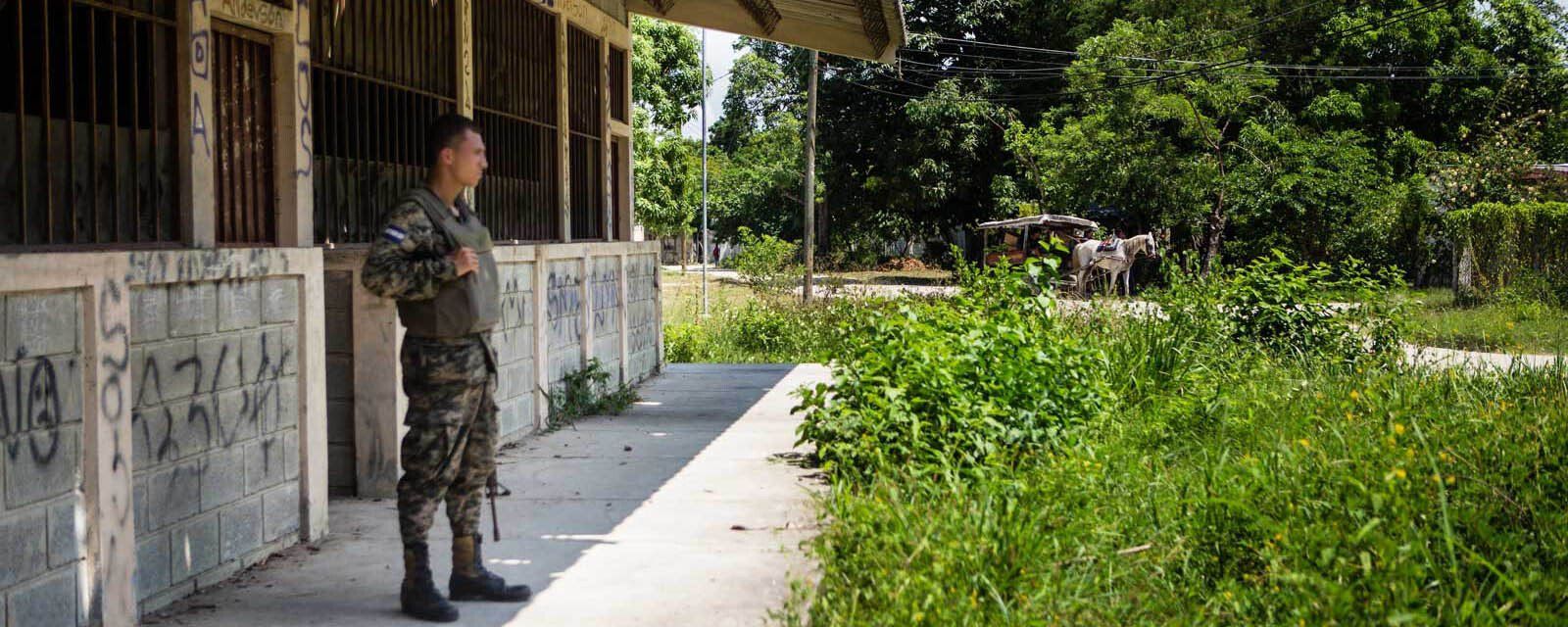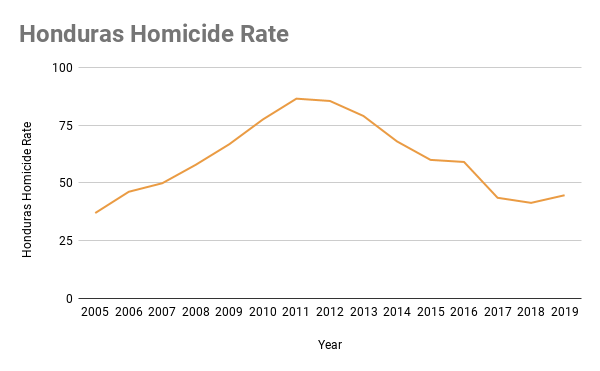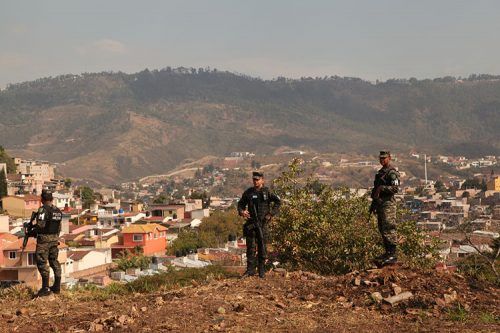We have a new name! We are ASJ, and we are for a more just society. Learn more >
We are ASJ, and we are for a more just society. Read more about our partnership>
HOMICIDES IN HONDURAS
How Violent is Honduras?
In recent years, violence in Honduras has reached “unprecedented levels,” and it has become one of the most violent places in the world. Violence affects Hondurans in a multitude of ways:
- Many Hondurans are at threat of theft and robbery on public transportation or when commuting to work.
- Business owners and bus drivers are extorted by gangs and forced to pay a “war tax” just to stay in business.
- Women and children are often subjected to sexual abuse or domestic violence.
- Hondurans living in poor, urban neighborhoods could be caught in the crossfire of rival gang activity.
Violence is widespread in Honduras, but we’ve already seen incredible progress in making Honduras safer – in one of Honduras’ most violent neighborhoods, ASJ’s interventions led to a 75% reduction in violence. We stand up to violence because we believe all members of society deserve to live safely and securely.
Homicide Rates per 100,000 residents. Data from the World Bank 2018
What is the Homicide Rate in Honduras?
Homicide rate per 100,000 residents. Data from the Violence Observatory at the National Autonomous University of Honduras.
It can be difficult to measure just how violent a country is, but experts generally look at the homicide rate as the best indicator of crime and violence. Homicide rates are measured by looking at the number of people murdered for every 100,000 inhabitants in a country.
From 2005 to 2011, Honduras’ homicide rate skyrocketed until it reached the highest rate in the world – 86.5 per 100,000. This means that for every 100,000 inhabitants, 87 people were murdered. In comparison, Honduras’ homicide rate was 18 times higher than the homicide rate in the United States at the time.
Since 2011, Honduras’ homicide rate has been reduced in half – an incredible improvement that allows more people to live securely and build brighter futures.
However, there is still much work to be done. Compared to other countries around the world, Honduras is still one of the most violent places in the world with a homicide rate of 44.7 per 100,000 in 2019. This means that an average of 13 people are murdered everyday.
Who is Vulnerable to Violence in Honduras?
- Women – Honduras has the fifth-highest rate of violence against women in the world. Every 18 hours, a woman is a victim of a violent death.
- Children and Adolescents – Honduras has the highest youth homicide rate in the world. On average, children living in Guatemala, Honduras, and El Salvador are 10 times more likely to be killed than a child who lives in the United States.
- Young Men – Because of the threats of organized crime and gang activity, boys born in Honduras have a one-in-nine chance of being murdered during their life.
- The Poor – As Gary Haugen describes in his book The Locust Effect, criminal justice systems in the developing world often fail to protect the poor from violence. This is the case in Honduras – especially in urban, marginalized neighborhoods.
Why is Honduras so Violent?
Read more about how problems like gang activity, drug trafficking, impunity, and corruption have created a cycle of violence.
What is Being Done to Prevent Violence?
When violence is prevalent, it infiltrates every part of society and leaves a noticeable impact on Hondurans’ everyday lives. It prevents families from being able to go out at night or children from playing outside. It puts people at risk on their way to work or when out shopping. And it puts Honduras’ poorest communities in deeper insecurity. The effect of violence is real, but we have seen that peace is possible for Honduras. In the last 10 years, Honduras went from having the highest homicide rate in the world to reducing it in half. Communities that were once lawlessly ruled by gangs now have reliable law enforcement standing up for justice.
At ASJ, our work in Honduras focuses on securing justice for the vulnerable and making government systems work for all members of society. We do this through both community-level interventions and national reforms. Watch this video to see how our homicide intervention has led to a drastic decrease in violence.
Learn more about our work in security.
Updated March 2020
Association for a More Just Society - U.S. (ASJ-US)
PO Box 888631, Grand Rapids, MI 49588
| info@asj-us.org | 1 (800) 897-1135
ASJ (formerly known as AJS) changed our name in 2021 to reflect our partnership with Honduras and our Honduran roots. Learn more.













